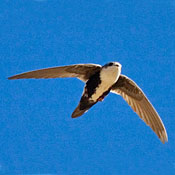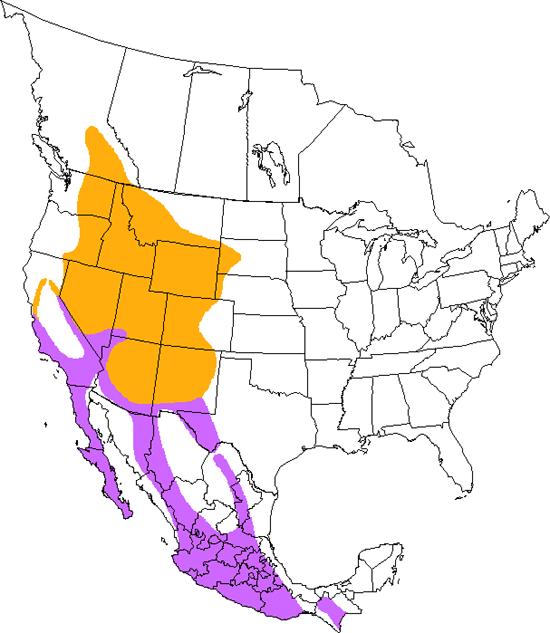White-throated Swift
Aeronautes saxatalis

Swallow Like

Length: 7 in. (17 cm )
Colonies of this swift are found flying in circling flocks high over head near cliffs, canyons and other vertical faces such as tall buildings. The White-throated Swifts can fly at incredibly fast speeds as they pursue insects in the air or in mating courtships. They roost at night clinging to vertical surfaces, and during cold nights, they can lower their body temperatures to reduce energy needs. The nest is glued to creviced rocks using saliva and feathers.
The four-digit banding code is WTSW.
Bibliographic details:
- Article: White-throated Swift
- Author(s): Dr. Biology
- Publisher: Arizona State University School of Life Sciences Ask A Biologist
- Site name: ASU - Ask A Biologist
- Date published:
- Date accessed:
- Link: https://askabiologist.asu.edu/activities/bird/white-throated-swift
APA Style
Dr. Biology. (). White-throated Swift. ASU - Ask A Biologist. Retrieved from https://askabiologist.asu.edu/activities/bird/white-throated-swift
Chicago Manual of Style
Dr. Biology. "White-throated Swift". ASU - Ask A Biologist. . https://askabiologist.asu.edu/activities/bird/white-throated-swift
Dr. Biology. "White-throated Swift". ASU - Ask A Biologist. . ASU - Ask A Biologist, Web. https://askabiologist.asu.edu/activities/bird/white-throated-swift
MLA 2017 Style
Be Part of
Ask A Biologist
By volunteering, or simply sending us feedback on the site. Scientists, teachers, writers, illustrators, and translators are all important to the program. If you are interested in helping with the website we have a Volunteers page to get the process started.




